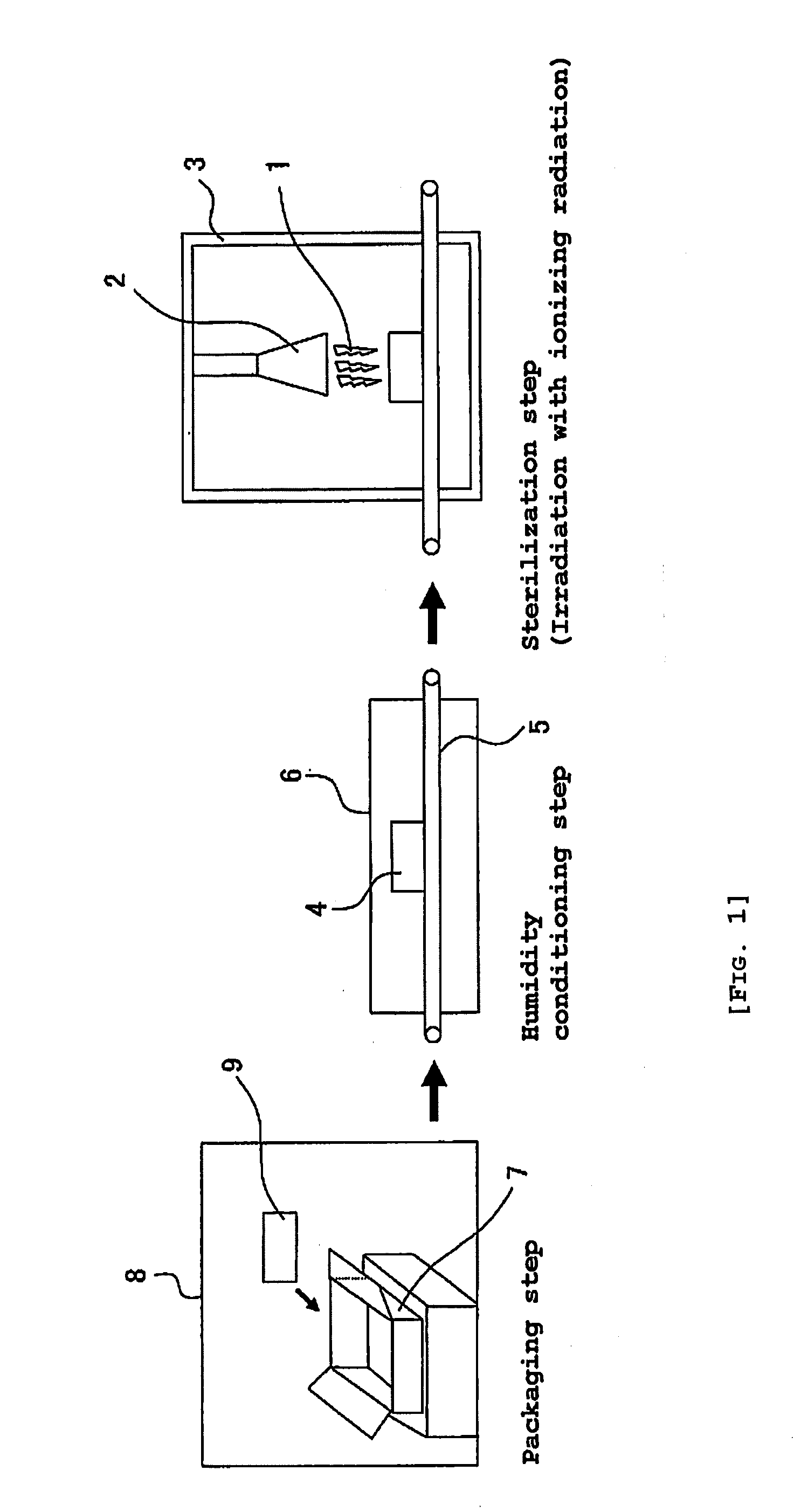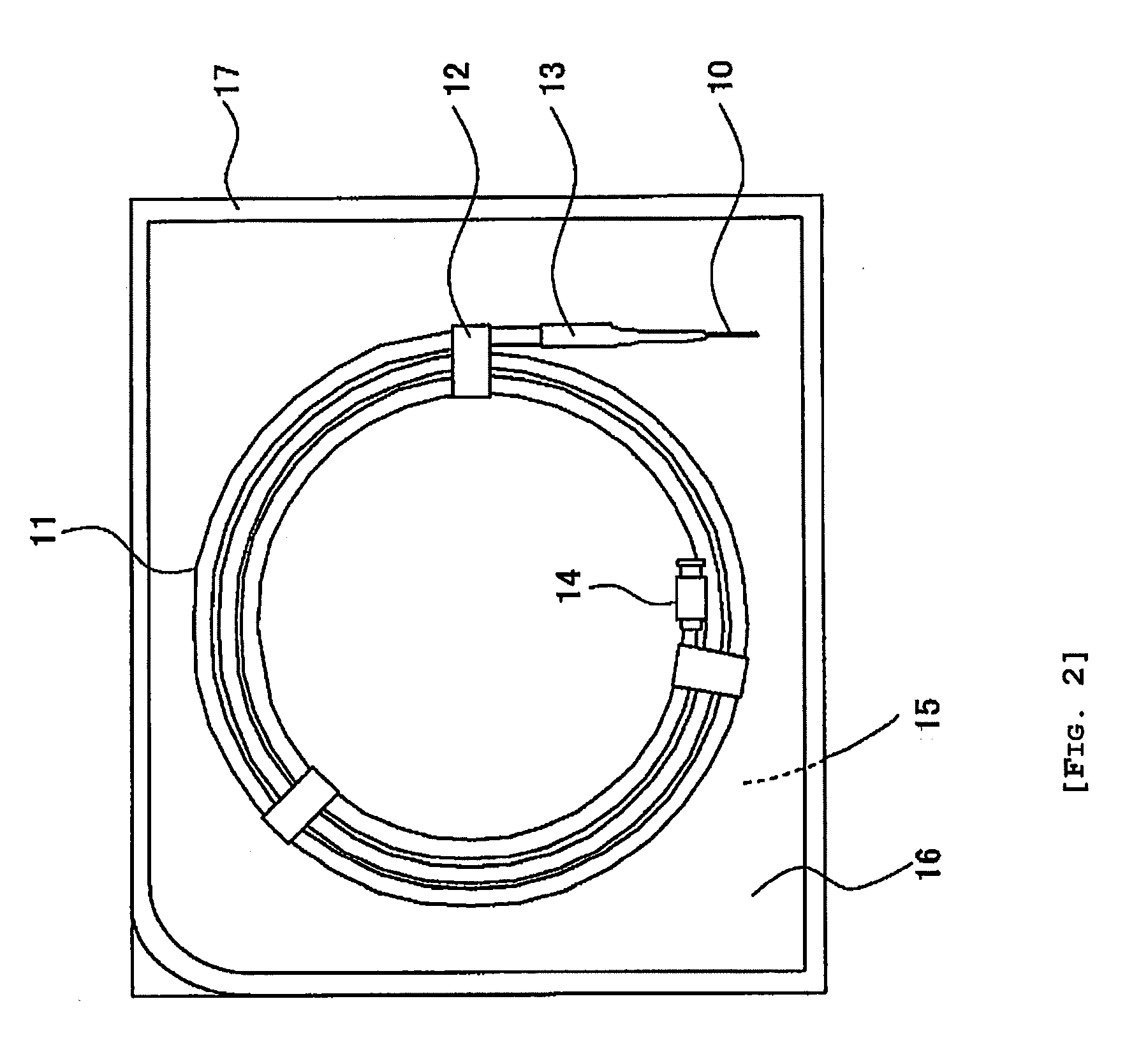Method for radiation sterilization of hydrophilic polymer-coated medical device
a hydrophilic polymer and medical device technology, applied in the direction of coatings, disinfection, construction, etc., can solve the problems of increasing the amount of eluted matter from the hollow fiber membrane, the inability to make use of oxygen molecular species, and the blood treatment device membranes used, etc., to achieve stable provision, reduce environmental load, and simple procedure
- Summary
- Abstract
- Description
- Claims
- Application Information
AI Technical Summary
Benefits of technology
Problems solved by technology
Method used
Image
Examples
examples
[0078]A series of test results using same materials are summarized in Table 1 as Examples 1 to 7 and Comparative Examples 1 to 10. With reference to Table 1, Examples 1 to 7 and Comparative Examples 1 to 10 are now described.
[0079]The invention is particularly illustrated based on the examples and comparative examples although the invention should not be construed as limited to the examples and may be carried out in any way so far as the essential constitutions defined in the claims are included.
examples 1 to 7
Product to be Sterilized
[0080]In Example 1, there were used plastic type guide wires (commercial products) having an outer diameter of 0.038 inches (about 0.97 mm) and a length of 150 cm. This guide wires were individually packaged with a gas-permeable packaging material partly making use of Tyvek (Du Pont) in the form of a package exemplified in FIG. 2. The structure of the guide wire is one exemplified in FIG. 3, in which a Ni—Ti alloy was used as a wire and the coating resin used was a tungsten (contrast agent) incorporated polyurethane resin, respectively. As a result of analysis, the hydrophilic polymer of this guide wire was analytically found to contain a monoalkyl ester of methyl vinyl ether / maleic anhydride copolymer.
[0081]In the form of the package, the guide wire product was vacuum dried, followed by maintaining in a constant temperature and humidity chamber at a temperature of 40° C. and at a relative humidity of 75% RH for 24 hours (Examples 1 to 4). After the condition...
PUM
| Property | Measurement | Unit |
|---|---|---|
| RH | aaaaa | aaaaa |
| RH | aaaaa | aaaaa |
| RH | aaaaa | aaaaa |
Abstract
Description
Claims
Application Information
 Login to View More
Login to View More - R&D
- Intellectual Property
- Life Sciences
- Materials
- Tech Scout
- Unparalleled Data Quality
- Higher Quality Content
- 60% Fewer Hallucinations
Browse by: Latest US Patents, China's latest patents, Technical Efficacy Thesaurus, Application Domain, Technology Topic, Popular Technical Reports.
© 2025 PatSnap. All rights reserved.Legal|Privacy policy|Modern Slavery Act Transparency Statement|Sitemap|About US| Contact US: help@patsnap.com



